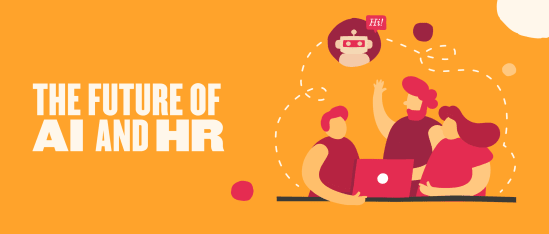Technology has immeasurably improved the way we work. We’re working faster and smarter, have the data to make more accurate decisions, and can communicate with colleagues across the globe instantly.
Many companies use AI to automate processes, but there’s so much more that can be gained. According to research involving 1,500 companies, the most significant performance improvements are achieved “when humans and machines work together”.
The study’s co-authors, who published their findings in the book Human + Machine: Reimagining Work in the Age of AI, put it this way: “Through such collaborative intelligence, humans and AI actively enhance each other’s complementary strengths: the leadership, teamwork, creativity, and social skills of the former, and the speed, scalability, and quantitative capabilities of the latter. What comes naturally to people (making a joke, for example) can be tricky for machines, and what’s straightforward for machines (analyzing gigabytes of data) remains virtually impossible for humans. Business requires both kinds of capabilities.”
Here are three ways HR and AI can work together to improve workplace communication.
1. Open up the conversation around employee wellbeing
If AI’s purpose is to aid human interaction rather than replace it, one area where this can be effective is monitoring employee stress and wellbeing. HR teams can use conversational AI chatbots to provide support for employee wellbeing and tools to deal with stress, workplace conflict, and mental health. With chatbots, employees can raise a hand to ask for help and find the resources on their own. Despite the best efforts of companies to destigmatize mental health, some employees may feel uncomfortable speaking to a colleague about personal struggles. AI chatbots can provide early intervention for employees to deal with stress and help them better communicate to their managers what they need—allowing employees to remain anonymous while seeking help.
Early interventions can be deployed through chatbots, with tips on managing stress and unplugging, or resources on how to resolve workplace conflict. If an employee needs extra support, HR can be notified to reach out to the employee to offer help. The AI and human relationship allows HR to help the most people and reserve extra attention for those who need it.
The future of AI will allow chatbots to display even more complex and human traits, such as sympathy and commiseration. As AI assistants become more conversational, it will feel like texting with a therapist. When employees have the tools to deal with stress or workplace tension, everything else becomes easier.
2. Keep up with new hires
Getting onboarding right is critical because it sets the tone for the employee’s future at the company. According to research by Work Institute encompassing data from 34,000 exit interviews, approximately 40% of new employees quit within the first year of being hired. Work Institute estimates that three-quarters of that turnover is the result of ineffective onboarding.
This is where AI can help, with chatbots designed to help HR communicate with new hires and make sure they’re completing their onboarding tasks, getting to know the lay of the land, and finding the information they need. For example, bots can help answer questions from the simple, “how do I submit my timesheet?” to the more complex, “who’s the best person to speak to about product integration?”. AI can help employees find the right information, and fast while freeing up HR time. AI assistants are especially helpful when onboarding global hires. No matter the time difference, your new employees can get the help they need, instantly. Gartner predicts that, by 2025, 50% of knowledge workers will use a virtual assistant on a daily basis, up from 2% in 2019.
The data collected from these AI assistants can also help HR improve the onboarding process by providing insights on what employees are asking for or what they find most useful. For example, if you’re onboarding remotely, you can use AI to see how many new hires are participating in virtual onboarding sessions, if they’re paying attention, or where they’re dropping off. At the end of the session, a chatbot can ask attendees what they thought of the session (all answers should be anonymous) and how it can be improved—feedback which is then relayed to HR. Maybe you’ll find that employees don’t have the patience to listen to a 90-minute presentation, or that some sessions are more engaging than others. HR teams can use this data to keep perfecting the onboarding processes.
3. Make meetings that everyone can “attend”
Meetings are a boost and a drain on productivity. Many companies take a “less is more” approach to meetings, and encourage employees to say no to non-essential meetings, and carve out more time for deep focus. Yet, sometimes valuable information is shared, or an interesting point is raised and you aren’t there to hear it. AI has the power to transform meetings, giving people back their time while accelerating the spread of information.
For example, during a meeting, someone usually has to take notes, which can take their focus away from the agenda on hand. That same person then usually has to send around the meeting notes, cutting them down and making it digestible for an audience that would rather skim than read. And sometimes, despite your best efforts, you miss a crucial point, or you can’t quite articulate the ideas thrown back and forth. Artificial intelligence will be a huge help in this area, allowing employees to record, transcribe, and share meeting notes with the click of a button. As AI advances, the ability to pick out the most important information will get better, making the process of sending out meeting notes easier, while keeping everyone aligned. A virtual assistant can then send out a follow-up invite, finding a meeting time that works for everyone so that your employees don’t have to spend the next 15 minutes searching through everyone’s work calendar.
Recommended For Further Reading
AI and HR: Working together to improve the workplace
HR teams face difficult decisions and complex situations on a daily basis. AI is here to help. As we said earlier, it’s important to remember that AI’s purpose is to aid human interaction rather than replace it. Working together, AI can help free up time for HR, support employees, and, when deployed intentionally, create a stand-out employee experience.


